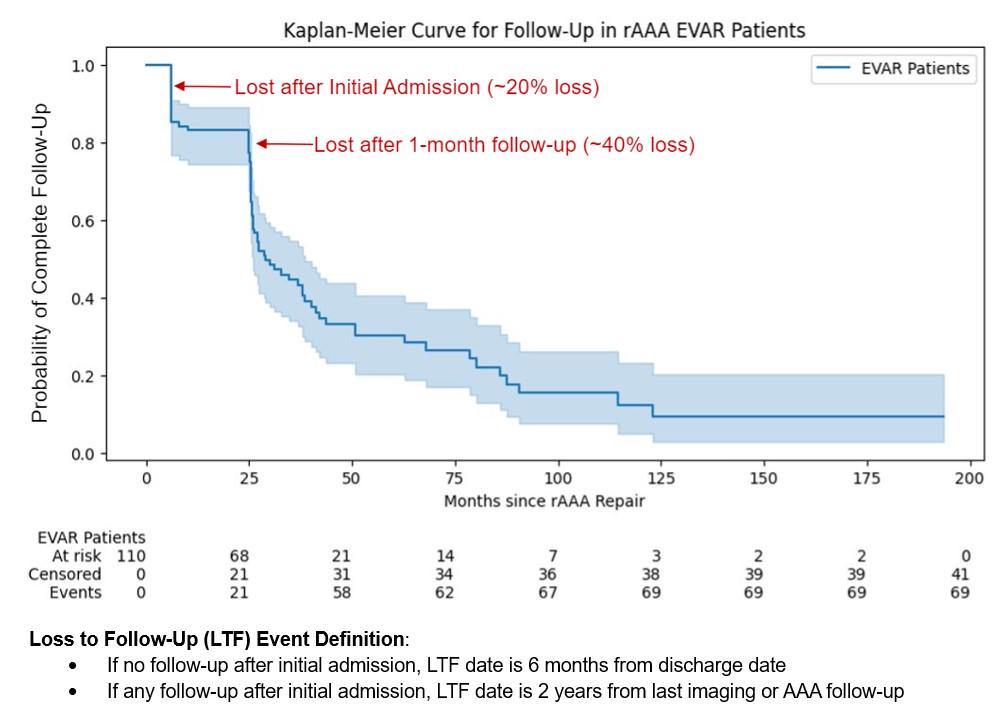OBJECTIVE: Post-repair surveillance of ruptured abdominal aortic aneurysm (rAAA) is critical for detecting potential complications. While substantial loss to follow-up has been reported in populations of primarily elective endovascular aortic repair (EVAR), there is limited data on patients presenting with rupture. Thus, we investigated follow-up trends and factors influencing retention at a major academic referral center with a wide service area.
METHODS: We included rAAA patients from 2002-2023 in this retrospective study. Loss to follow-up was defined as absence of vascular surgeon evaluation for 2 years (EVAR) or 5 years (open repair) prior to death or present day. Multivariate regression and survival models assessed the influence of potential factors on follow-up and survival outcomes.
RESULTS: Of 455 patients who presented with rAAA, 60% who received EVAR and 39% who received open repair were lost to follow-up. There were no significant differences in baseline demographics. A higher proportion of EVAR patients with complete follow-up had eGFR < 30 (24.3% vs.7.2%, p=0.02) and prior endograft (29.2% vs. 10.0%, p=0.01) compared to patients
lost to follow-up. 20% of EVAR patients were lost after initial admission and 40% of patients were lost after the 1-month post-operative follow-up visit. In multivariate analysis of EVAR patients, residing more than 10 miles from hospital was associated with loss to follow-up (OR 4.98 [1.15 - 21.55]). Prior endograft at time of rupture (OR 0.25 [0.07 - 0.93]), and eGFR < 30 (OR 0.24 [0.06 - 0.95]) were associated with complete follow-up in EVAR patients. EVAR patients who were lost to follow up trended towards worse survival (HR 2.04 [0.67 - 6.26]), while prior endograft was associated with significantly worse survival after EVAR (HR 3.11 [1.20 - 8.04]).
CONCLUSIONS: The majority of patients treated for ruptured abdominal aortic aneurysm were lost to follow-up, particularly after the 1-month post-operative visit; however, geographic proximity to the hospital and higher baseline medical engagement, as indicated by prior endograft and chronic kidney disease, appeared to be protective against such loss. Targeted counseling and engagement at the 1-month post-operative visit, particularly in relatively well patients, may enhance retention to long-term follow-up. 